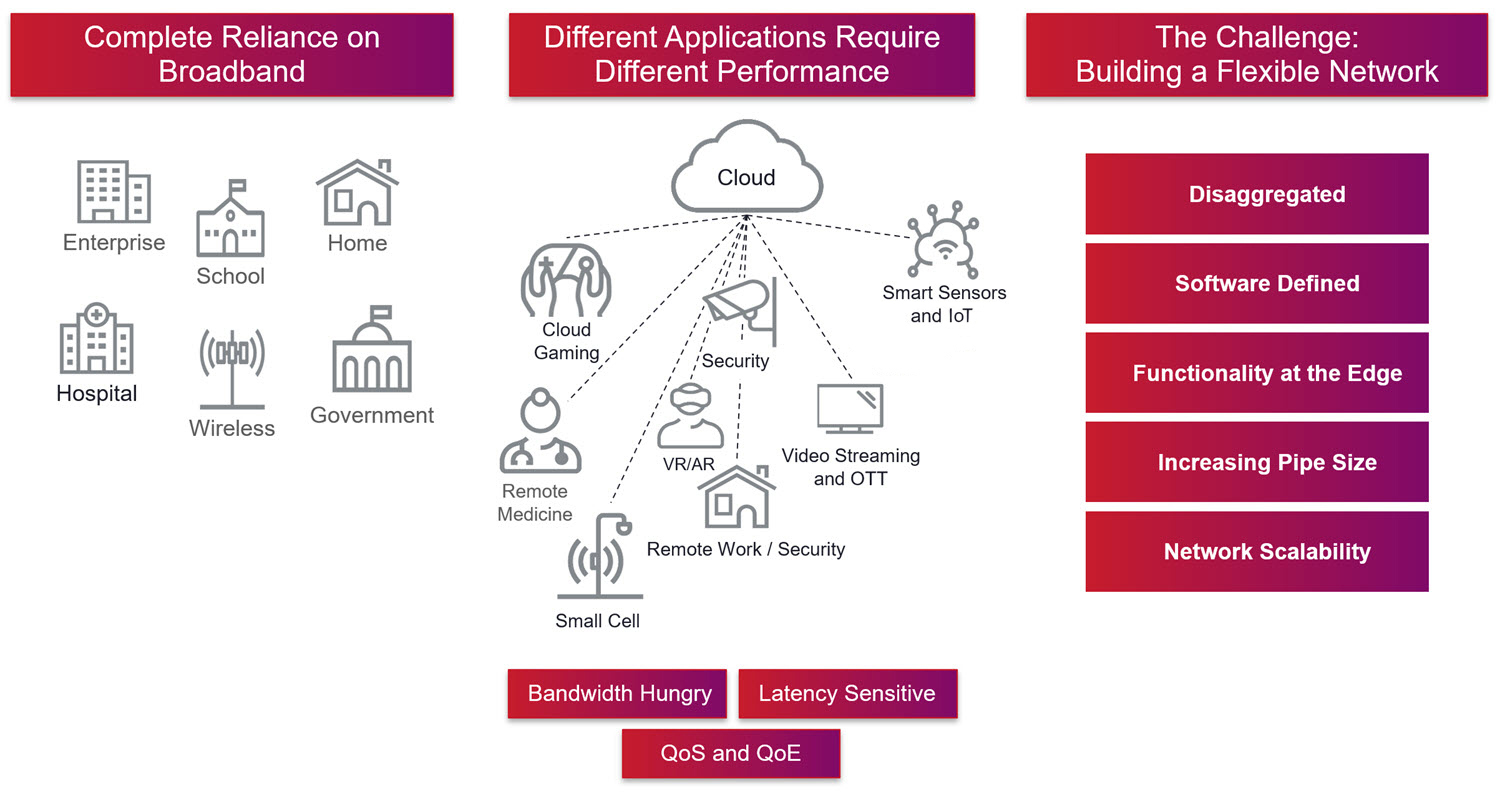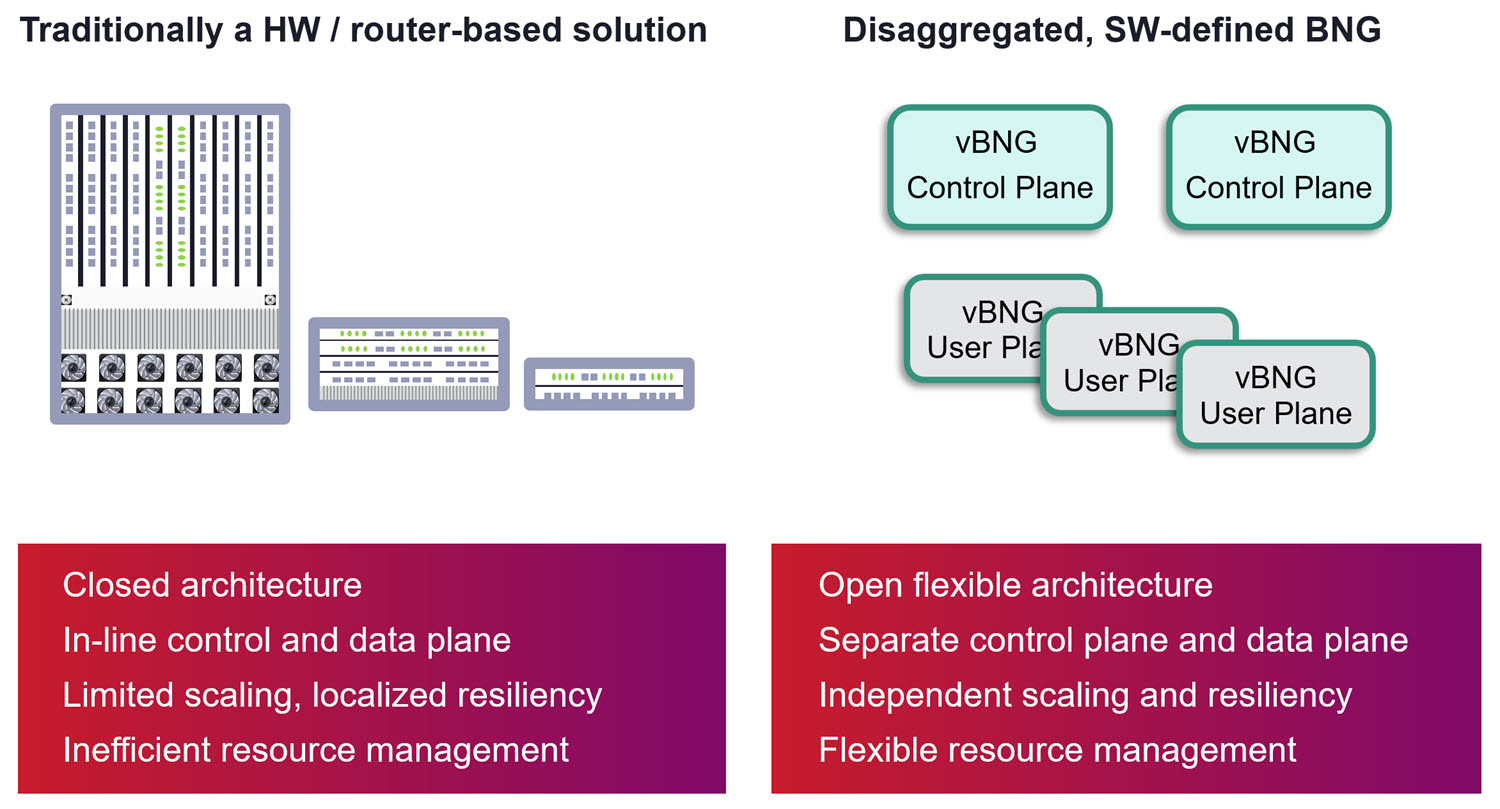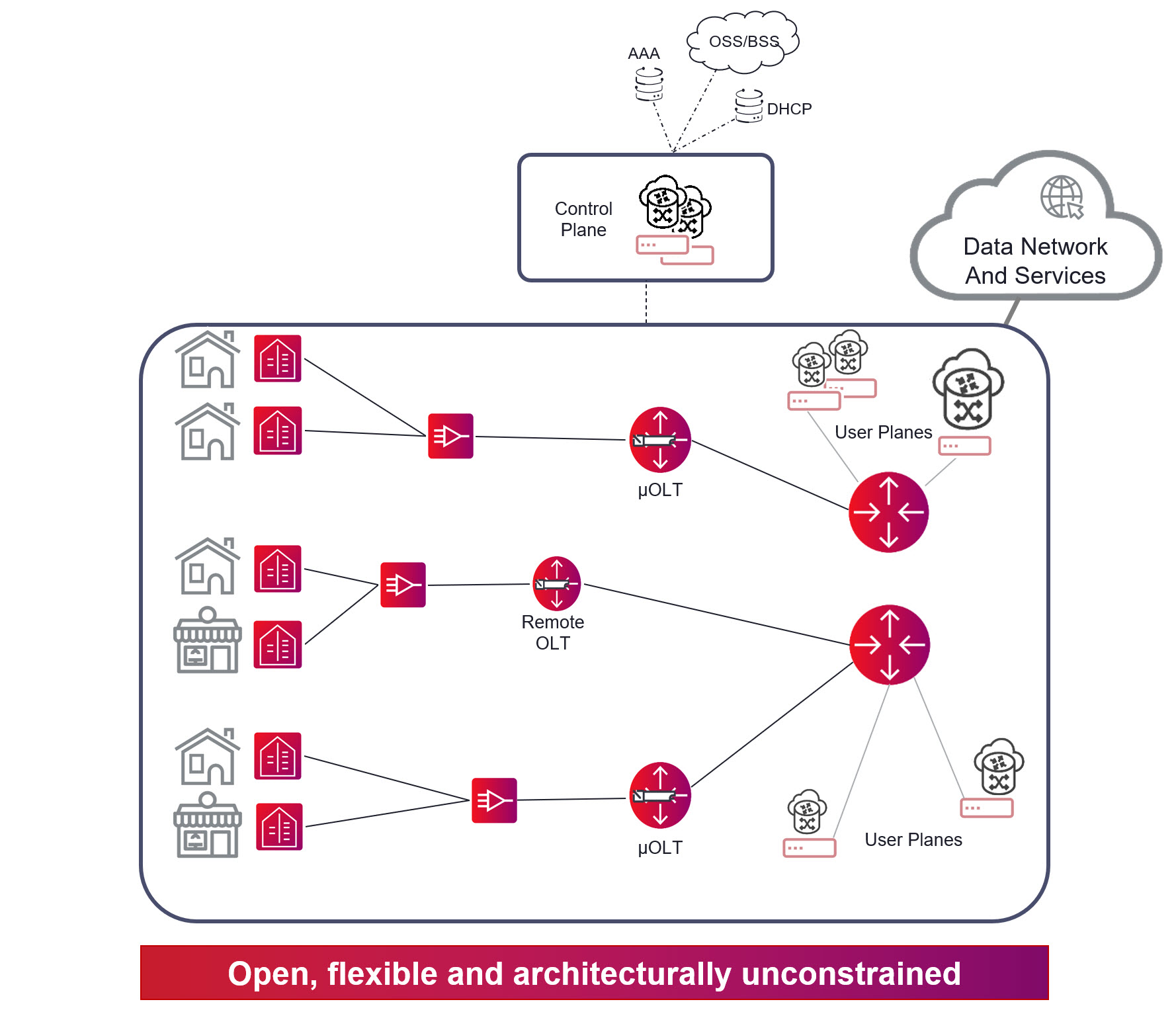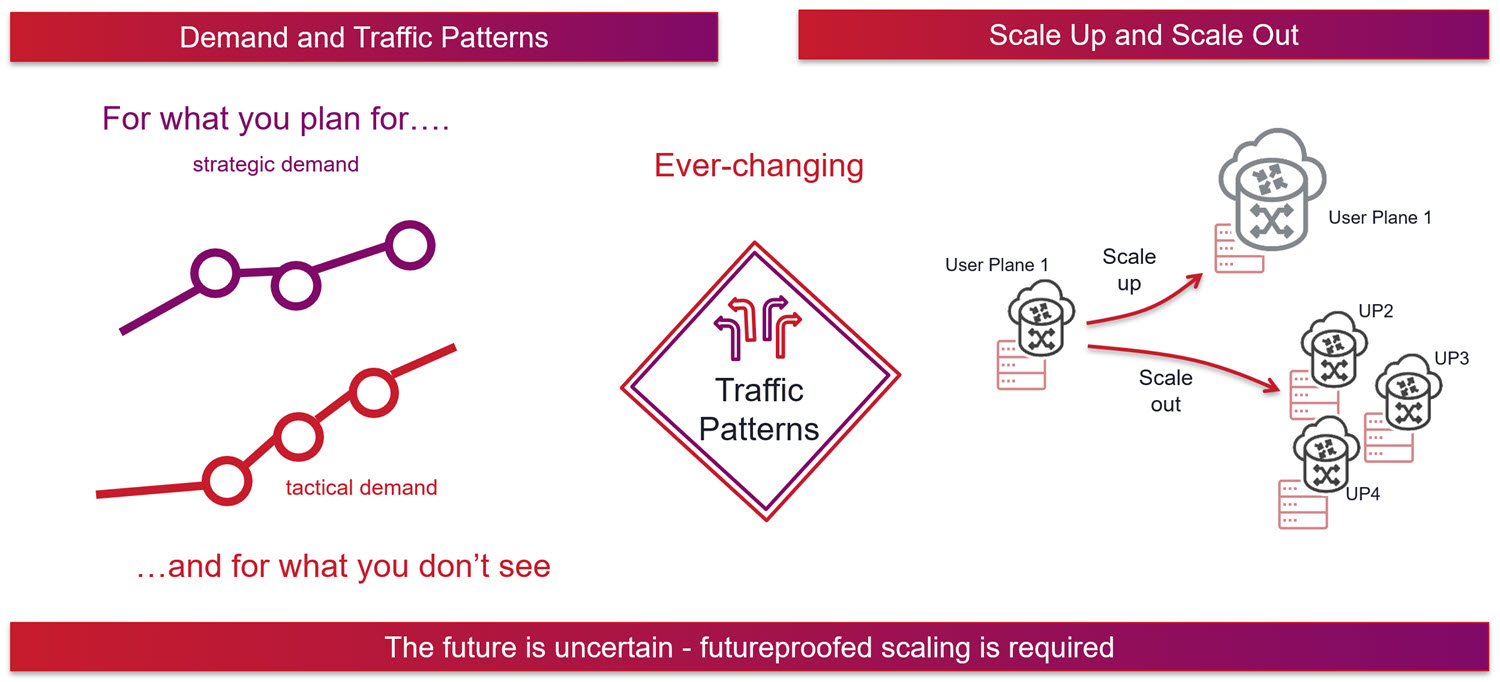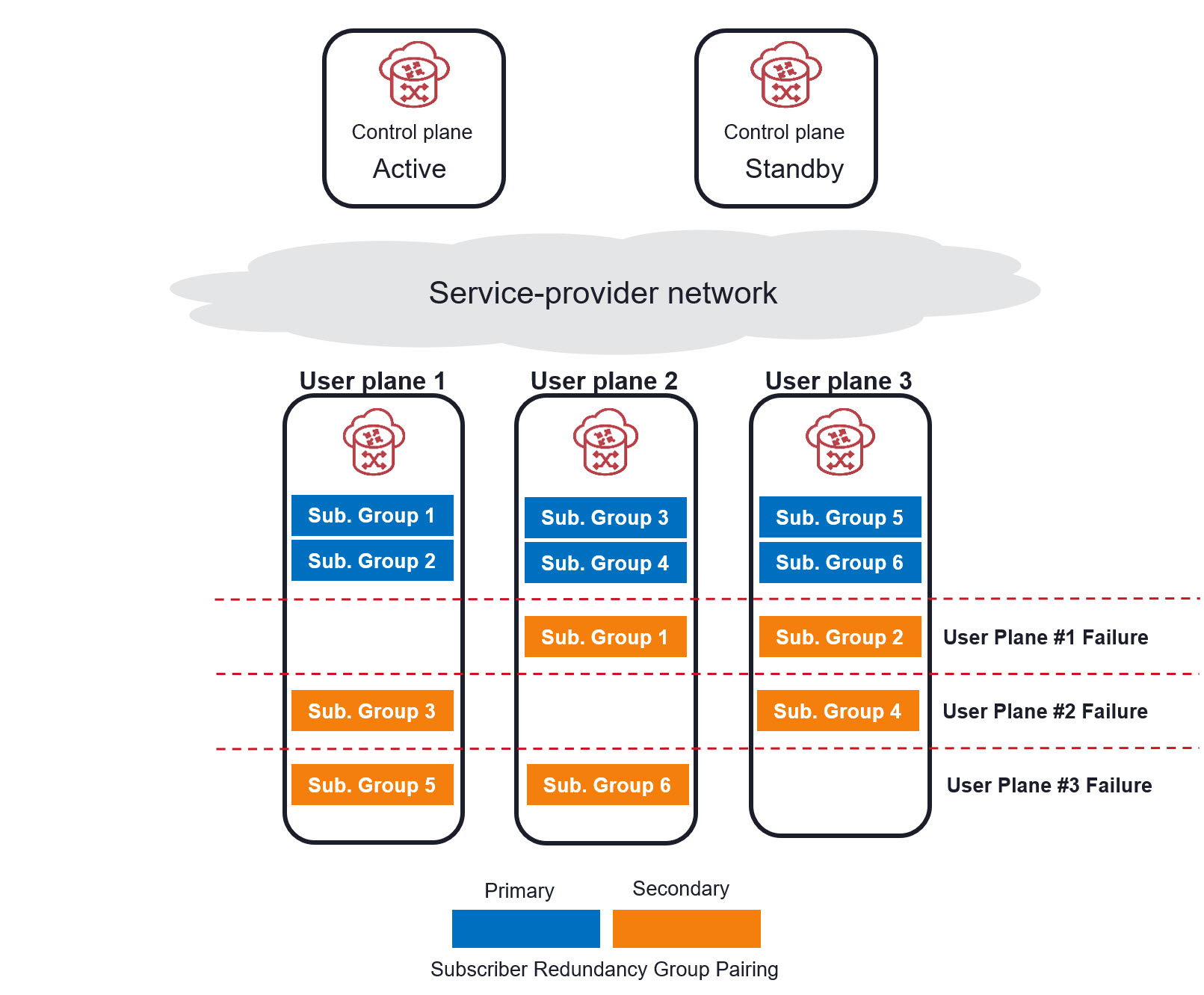As demand for bandwidth and associated broadband services grows unabated, service providers are under intense pressure to meet increased customer demand for more specialized services. But how do they transform their networks with a technical and economic model that creates value for them and for their customers? The answer lies in a network architecture built on disaggregation, openness, and scalability. In this technical deep dive, Ciena’s Chuck Harris explains how the architectural constructs of Ciena’s virtual Broadband Network Gateway (vBNG) deliver the flexibility and agility service providers need in today’s evolving network.
The fixed broadband network has several critical components, but the linchpin is the Broadband Network Gateway (BNG), which establishes and manages subscriber sessions by acting as the authentication point through which subscribers connect to a carrier’s broadband network. It aggregates subscriber traffic from the access network and handles several important subscriber management functions, including Authentication, Authorization, and Accounting (AAA), IP address assignment, Quality of Service (QoS), and policy enforcement. All traffic outbound to the internet passes through the BNG and all traffic inbound from the internet passes through the BNG on its way to the customer.
Historically, the main service provided was simply basic internet access. However, the world has since changed with broadband services evolving to include streaming video, gaming, home office, Internet of Things (IoT), and a multitude of other applications.
This has not only increased the volume of transmitted information, but the traffic model has become an ever-changing mix of varying protocols and performance requirements. Many new applications are bandwidth-hungry and latency-sensitive. The ability to reduce latency will become a differentiator in the future as edge applications demanding more real-time performance emerge. Bandwidth growth and latency reduction, along with other functionality requirements for Quality of Service (QoS) and a better Quality of Experience (QoE), all present a challenge.
Figure 1: Application demands are pressuring the network
It is impossible to predict how application and service demands will change over time. Think of the number of technological advancements taken for granted today that didn’t exist only a decade ago. The challenge is to build a flexible network capable of addressing these market dynamics, particularly at the network edge.
Knowing that the lifetime of fiber optic cable plant is ~40 years, it makes sense to plan ahead for future applications, installing lots of fibers, leaving lots of open duct space and choosing network architectures that will not obstruct upgrades.
With the tremendous investment going into fiber networks which have a typical lifespan of over 30 years, it only makes sense to deploy a BNG capable of addressing today’s needs with the ability to evolve as those needs change. This plays directly into the key values delivered by Ciena’s vBNG:
Disaggregated, virtualized, and scalable
Legacy (chassis-based) BNGs, with their historically closed architectures, make it difficult to address the rapidly changing demands for scalability, flexibility, and innovation at the network edge, particularly in addressing new and emerging application requirements.
In comparison, Ciena’s vBNG was architected as a software-defined, fully containerized, and virtualized, cloud-native BNG from its inception. It brings the flexibility and agility operators need to quickly address opportunities in today’s ever-changing broadband market.
Specifically, Ciena’s vBNG is an open architecture and built to the Broadband Forum’s TR-459 Standard: “Control Plane, User Plane Separation (CUPS) for a disaggregated BNG.” There is no specialized hardware required, functionality is delivered in software, and it runs on x86-based, Commercial Off-The-Shelf (COTS) servers. This architecture delivers tremendous value in its openness, flexibility, and scalability.
Figure 2: Disaggregation of the Broadband Network Gateway
The control plane and user plane are independently resilient and can be placed anywhere in the network and sized as required. Typically, a control plane is placed in a central location for operational simplicity and ease of management.
A centralized control plane simplifies subscriber management, streamlines management of IP address pools, and eases the implementation of northbound integrations to Operations Support Systems (OSS) and Business Support Systems (BSS).
Figure 3: Ciena’s virtual Broadband Network Gateway
Broadband traffic varies tremendously across the network and can change quickly, driven by several factors including population, subscriber usage patterns, and the types of applications being accessed. It is simply impossible to accurately predict and size equipment to economically serve subscribers’ changing needs over time.
Figure 4: Ciena’s vBNG eliminates the scalability problem
Ciena’s vBNG user planes can be sized according to traffic demands and can also be placed anywhere in the network where needed. They can be scaled up (grow) as traffic increases or can be scaled out (deployed into new geographies) as opportunities emerge and can even have different user planes tailored in their configurations to optimize for different types of services – basic internet vs. streaming video vs. low-latency edge applications. This allows network operators to adjust their edge service architecture to align with new opportunities.
Software-defined and containerized from inception
One of the defining attributes of Ciena’s vBNG is that it delivers functionality in software, which is not only disaggregated from hardware, but is also containerized.
Containerization is the bundling of application code together with related configuration files, libraries, and other dependencies required for it to run. This “container” or single package of software is abstracted from the host’s operating system, and therefore it stands alone. This makes it highly portable and able to run on any infrastructure or in any environment that supports the container technology, such as Kubernetes.
Since each container is effectively its own entity, software developed and deployed in containers is more portable, scalable, has better fault isolation, and is more agile. This is why containers are so popular.
Ciena’s vBNG was designed to run in containers from inception meaning applications can be brought to life faster, with greater efficiency, and more agility than other solutions. Being architecturally open and software-defined goes hand-in-hand with the ability to develop and deploy future applications as they arise, which is extremely important in the rapidly evolving broadband market.
Highly resilient
Residential and business customers depend on broadband service availability and performance, which means reliability and redundancy are critical considerations. Ciena’s vBNG resiliency model is architected to meet the stringent demands of high-availability service.
Control planes and user planes are independently resilient, independently sized, and architected to ensure service protection. The control plane can be deployed with local or geo-redundancy in an active/standby configuration. User planes can be configured for 1:1, N:1, or M:N high availability.
Control plane failover is hitless, with zero packet loss. In addition, there is no risk of “split-brain” scenarios in which two BNGs try to be active for the same set of subscribers, as can occur in legacy BNGs that use heartbeats to determine which should be active and which should be standby.
For the user plane, subscriber redundancy groups are defined and then paired on a primary user plane and on a secondary user plane. If a user plane fails and a primary subscriber group is lost, the secondary user plane picks up service responsibility.
Figure 5: Highly Resilient BNG Architecture
Primary subscriber groups can use a single secondary redundant user plane, or they can be spread across several user planes as shown, reducing risk in the event of a double failure. User plane failover is fast and efficient, resulting in most subscribers not even noticing it.
Choose the right BNG platform
The BNG is the linchpin in the delivery of broadband service. The critical role it plays – along with the market’s growing demand for bandwidth and the changing mix of applications at the edge of the network – shines a light on the critical importance of choosing the right BNG.
Flexibility and agility will be keys to winning the future, and those are hallmarks of Ciena’s vBNG. From its disaggregated and software-defined architecture to its ability to scale while delivering superior resiliency, Ciena’s vBNG is transforming the network edge.







